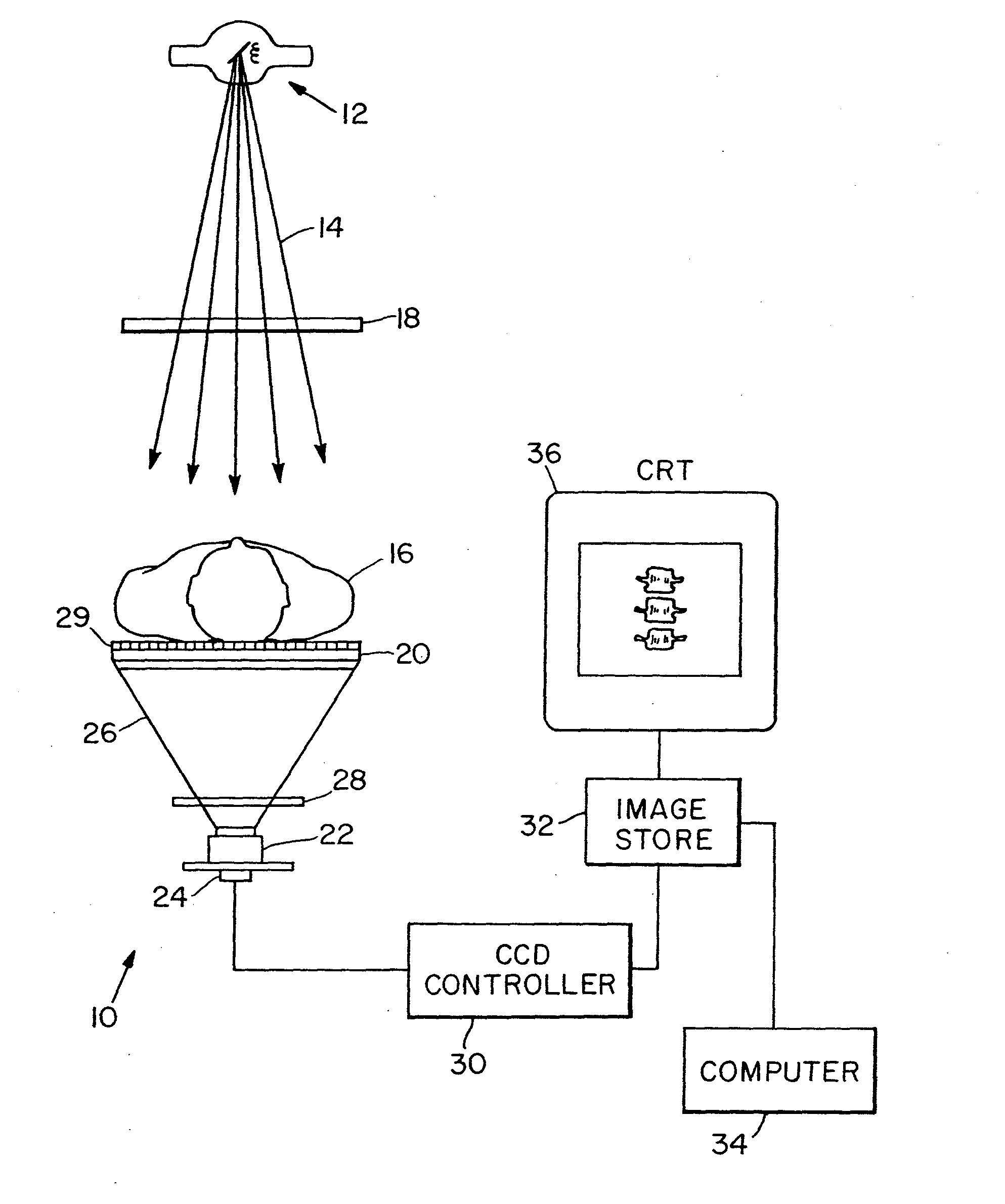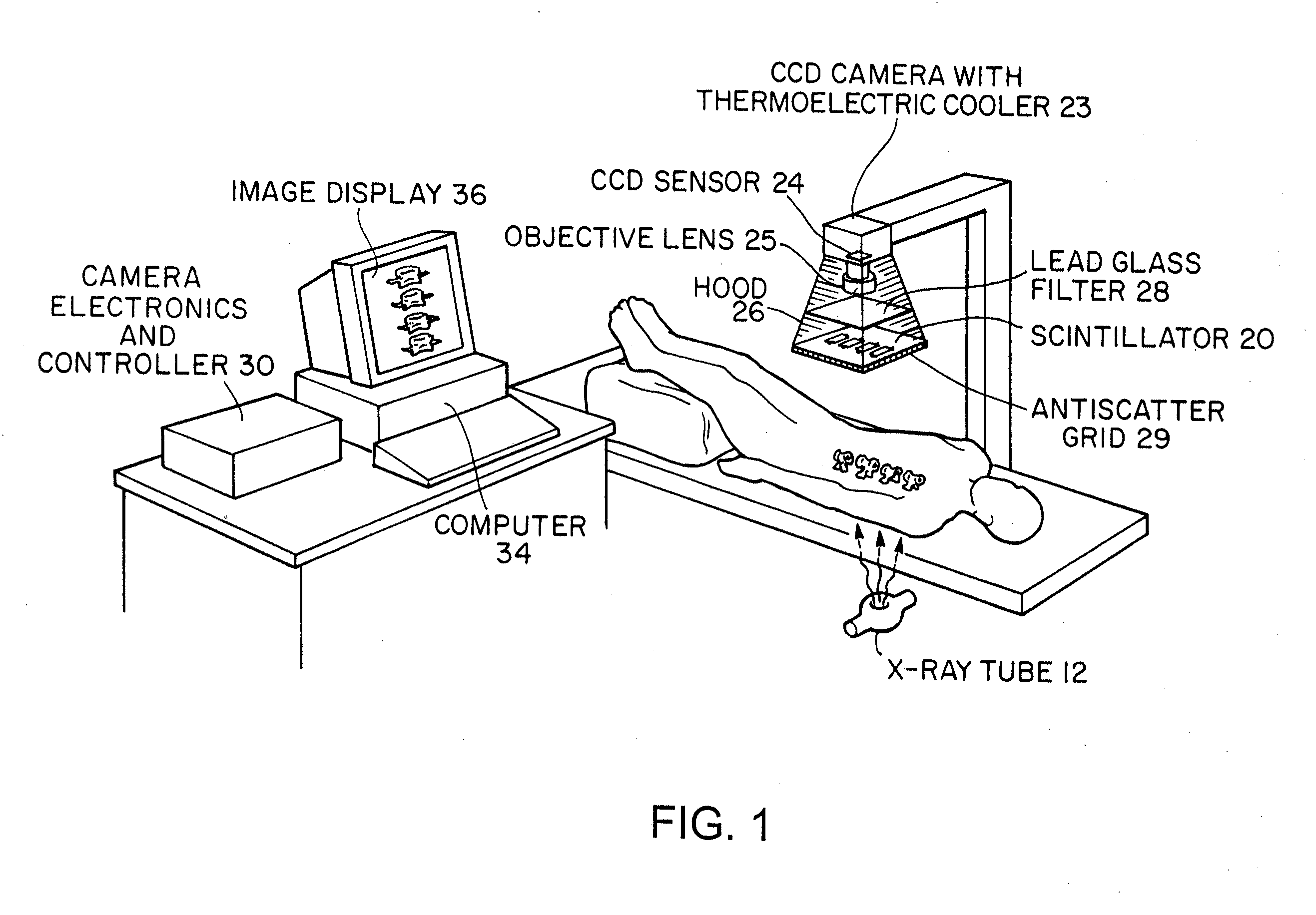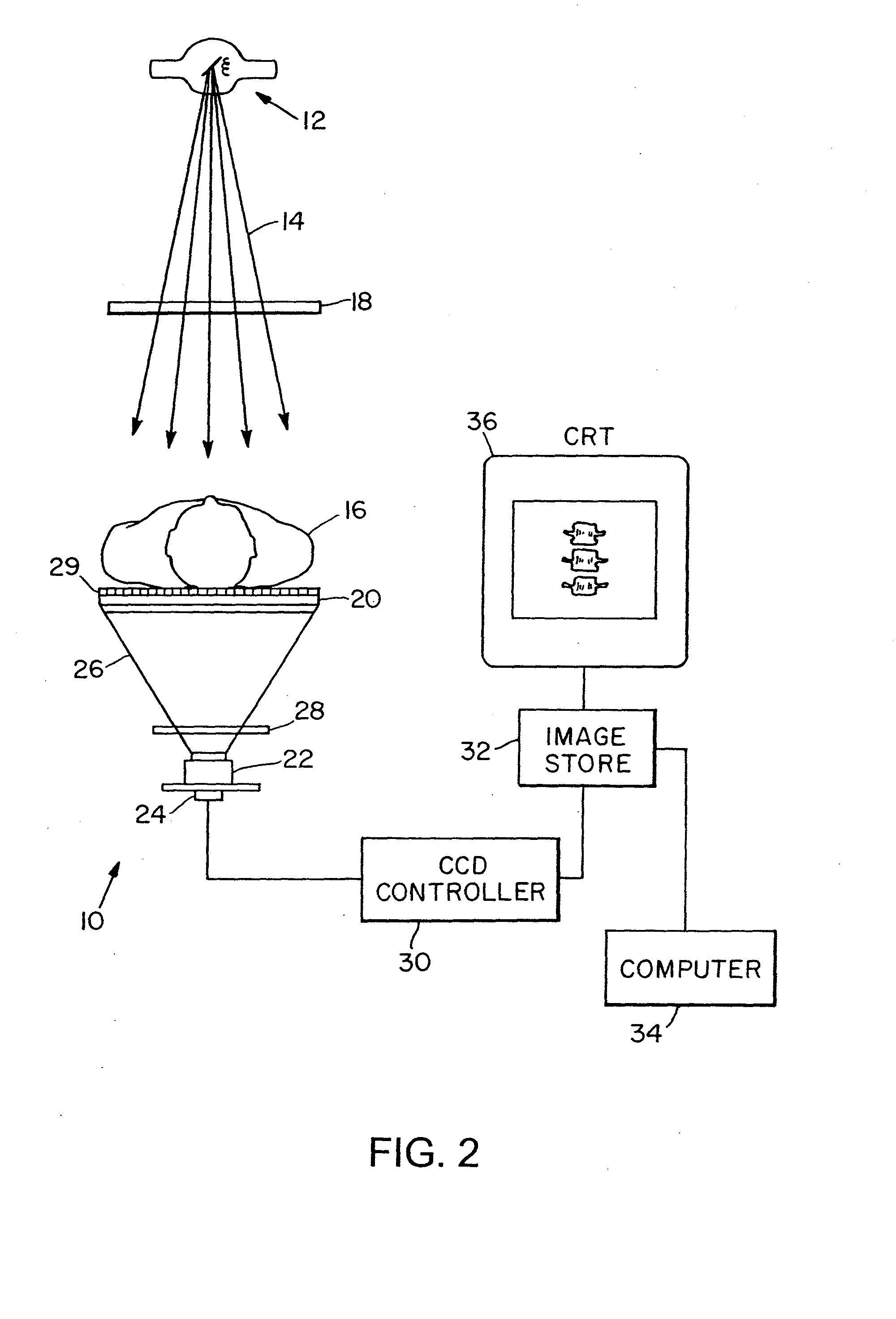System for quantitative radiographic imaging
a radiographic imaging and quantitative technology, applied in the field of radiographic examination equipment, can solve the problems of increasing the risk of fracture or similar bone related injury, poor spatial resolution, and limited current rectilinear scanning approach, and achieve the effect of reducing or eliminating scattered radiation
- Summary
- Abstract
- Description
- Claims
- Application Information
AI Technical Summary
Benefits of technology
Problems solved by technology
Method used
Image
Examples
Embodiment Construction
[0045]In FIG. 1 a preferred embodiment of the invention for performing bone densitometry studies uses a detector 10 and either an x-ray tube 12 or a radionuclide radiation source such as Gadolinium-153. The detector 10 comprises a scintillating plate 20 which is optically coupled to a two-dimensional charge-coupled device 24 (CCD). The CCD is a two dimensional array of detectors integrated into a single compact electronic chip. The optical coupling between the scintillating plate 20 and the CCD 24 is accomplished by an optical grade lens 25. Such a lens should have a low f-number (0.6-1.8) for adequate light collection from the screen. The collection efficiency (E) of light from the scintillating plate emitted in the direction of the CCD can be computed by the equation:
E=tm24f2(m+1)2
where:
[0046]t: Transmission factor of light through the lens
[0047]m: magnification from the Scintillating plate to the CCD
[0048]f: f-number of the lens
[0049]In an alternate approach, the optical coupling...
PUM
 Login to View More
Login to View More Abstract
Description
Claims
Application Information
 Login to View More
Login to View More - R&D
- Intellectual Property
- Life Sciences
- Materials
- Tech Scout
- Unparalleled Data Quality
- Higher Quality Content
- 60% Fewer Hallucinations
Browse by: Latest US Patents, China's latest patents, Technical Efficacy Thesaurus, Application Domain, Technology Topic, Popular Technical Reports.
© 2025 PatSnap. All rights reserved.Legal|Privacy policy|Modern Slavery Act Transparency Statement|Sitemap|About US| Contact US: help@patsnap.com



